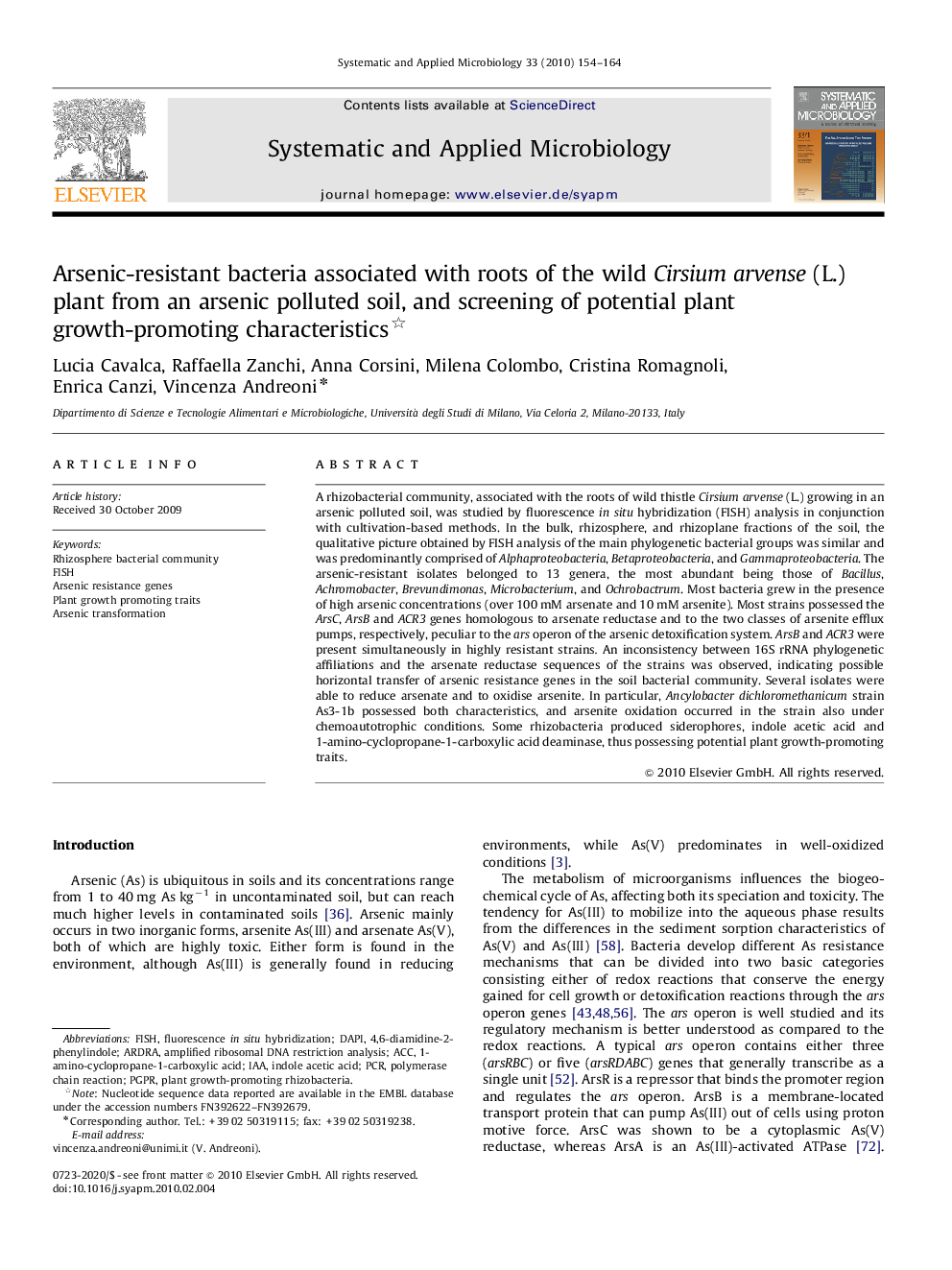| کد مقاله | کد نشریه | سال انتشار | مقاله انگلیسی | نسخه تمام متن |
|---|---|---|---|---|
| 2063078 | 1076647 | 2010 | 11 صفحه PDF | دانلود رایگان |

A rhizobacterial community, associated with the roots of wild thistle Cirsium arvense (L.) growing in an arsenic polluted soil, was studied by fluorescence in situ hybridization (FISH) analysis in conjunction with cultivation-based methods. In the bulk, rhizosphere, and rhizoplane fractions of the soil, the qualitative picture obtained by FISH analysis of the main phylogenetic bacterial groups was similar and was predominantly comprised of Alphaproteobacteria, Betaproteobacteria, and Gammaproteobacteria. The arsenic-resistant isolates belonged to 13 genera, the most abundant being those of Bacillus, Achromobacter, Brevundimonas, Microbacterium, and Ochrobactrum. Most bacteria grew in the presence of high arsenic concentrations (over 100 mM arsenate and 10 mM arsenite). Most strains possessed the ArsC, ArsB and ACR3 genes homologous to arsenate reductase and to the two classes of arsenite efflux pumps, respectively, peculiar to the ars operon of the arsenic detoxification system. ArsB and ACR3 were present simultaneously in highly resistant strains. An inconsistency between 16S rRNA phylogenetic affiliations and the arsenate reductase sequences of the strains was observed, indicating possible horizontal transfer of arsenic resistance genes in the soil bacterial community. Several isolates were able to reduce arsenate and to oxidise arsenite. In particular, Ancylobacter dichloromethanicum strain As3-1b possessed both characteristics, and arsenite oxidation occurred in the strain also under chemoautotrophic conditions. Some rhizobacteria produced siderophores, indole acetic acid and 1-amino-cyclopropane-1-carboxylic acid deaminase, thus possessing potential plant growth-promoting traits.
Journal: Systematic and Applied Microbiology - Volume 33, Issue 3, April 2010, Pages 154–164